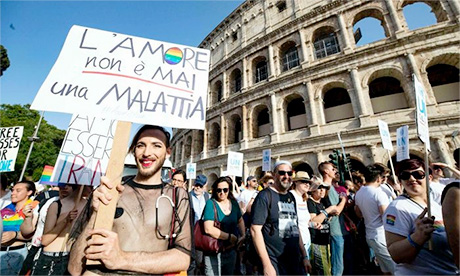When Colleen Fay of Mount Rainier, Maryland, came out as transgender 12 years ago to her parish music director, she was fired from her position on the choir.
She later described feeling like she was in “doctrinal limbo” because there is no universal teaching on gender from the church.
“I’m hurt by the Catholic Church every single day,” she said. “They want me and they don’t want me.”
On June 10, the Vatican released a document that seems to seek to clarify the ambivalence Fay and other transgender Catholics have described.
It is the most comprehensive document on gender identity the Vatican has ever released.
Called “Male and Female He Created Them: Towards a Path of Dialogue on the Questions of Gender Theory in Education,” the document aims to address what it calls “educational crisis” surrounding sexuality and gender.
But its conclusion has not been received favorably by trans Catholics; it says that Catholic schools must help teach young people that gender is fixed at birth.
According to the Congregation for Catholic Education, the Vatican office that released the document, “gender theory” has misled people to think that gender is different from biological sex.
“Oscillation between male and female becomes, at the end of the day, only a ‘provocative’ display against so-called ‘traditional frameworks’, and one which, in fact, ignores the suffering of those who have to live situations of sexual indeterminacy,” the authors write.
“Male and Female He Created Them” is the most comprehensive document on gender identity the Vatican has ever released.
It is not clear why the Congregation for Catholic Education has decided to weigh in on gender identity now.
The announcement comes at a time when trans people’s rights are under threat on a national level.
Last month the Trump administration announced a proposal to roll back protections for discrimination against trans people by healthcare providers.
Transgender people make up only 0.6 percent of the US population, and they are about 8 times as likely to report attempting suicide than the rest of the population.
This rate rises even higher depending on the type of discrimination they are subject to, says a 2014 study by the Williams Institute.
It is not clear why the Congregation for Catholic Education has decided to weigh in on gender identity now.
The past few years have seen a rapid increase in conversations about LGBTQ Catholics within the church — the Vatican used the acronym LGBT for the first time in June of last year, in a document written for a meeting of bishops in Rome. In a final version of the document, the acronym was removed.
In the United States, attitudes of Catholics have been shifting.
Sixty-eight percent of Catholics in the United States say they feel more supportive toward transgender rights than they did five years ago, compared to 62 percent of the general population, according to a survey conducted this year by Public Religion Research Institute (PRRI).
In 2017, Father James Martin, a Jesuit priest, wrote “Building a Bridge: How the Catholic Church and the LGBTQ Community Can Enter into a Relationship of Respect, Compassion, and Sensitivity,” a book that affirmed LGBTQ Catholics and received praise from several bishops as well as members of the LGBTQ community for advancing the conversation on this topic.
The new document talks about gender and transgender people in a less polemical way than the church has done previously. (Pope Francis, for example, has in the past compared arguments for transgender rights to those for nuclear weapons.)
It dedicates a section to “Listening” and “Points of Agreement” that concedes that “unjust discrimination” has been “a sad fact of history” and has taken place within the church.
But it also reiterates views that the pope and the US bishops has expressed which characterize transgender people as “choosing” their gender on gender, which themselves have been called transphobic and discriminatory by some trans Catholics.
So what does this mean for transgender Catholics? Here, five trans Catholics respond. Continue reading
- Image: ABC
News category: Analysis and Comment.




